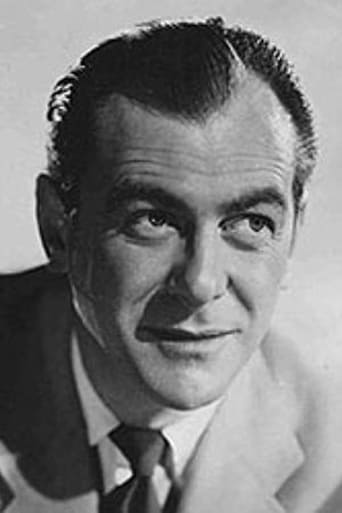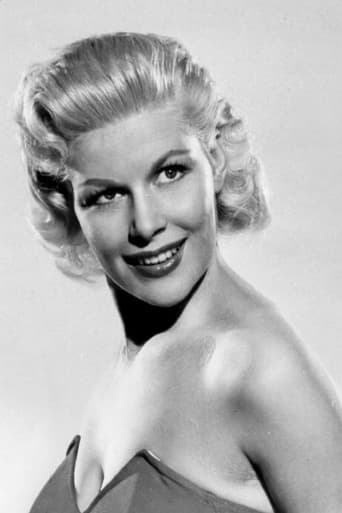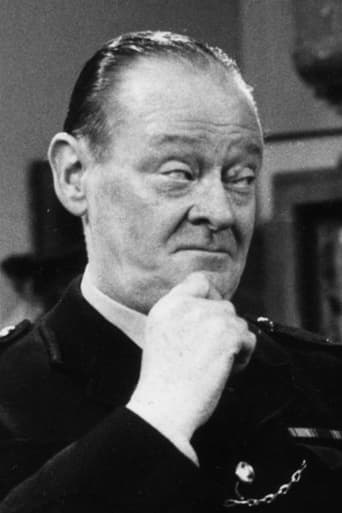malcolmgsw
This is the type of film which used to appear as the B film in British cinemas in the 1950s and a staple of British TV up till recent times.Paul Carpenter stars as a reporter trying to find scoops on a woman blackmailer who is murdered in her flat at the beginning of the film.He falls initially for the affections of a rival reporter,Adreienne Corri,but his true affections lie with his secretary,Hazel Court,Queen of the B films.The fact is that there is not much mystery as there are not a multiplicity of suspects.Though it is hard to believe that the murderer would try to kill Carpenter since it would only make his chances of capture more likely.Anyway a reasonable film of its genre.
bob the moo
Paul Banner used to be an American reporter working in London. Recently he has gone freelance, leaving his paper so that he can focus more on chasing down facts and selling his stories once he gets them – no more deadlines or misguided editors to divert his attention. When showgirl Nina Duke is murdered the press are all harrying the police for statements and facts but Banner hangs back and does a little work of his own to uncover the story. Nina, it transpires, was in jail for blackmail previously so it is possible that this was why she was killed – however can Banner get the story that the police cannot?The concept of a journalist investigating a crime is one that had been used well in the decade around this film and had produced some classic films along the way. Here we have a British attempt at cracking the genre, albeit with an American in the lead. It is a reasonably entertaining affair although it is understandable why it has barely amassed 20 votes on this site at the time of writing. The plot is solid enough but delivered without any sense of fun, pace or excitement. It is a very British way of doing it and it does well to set the period and has the trimmings of mundane British life (as opposed to the way newsroom fizzle and journalists talk in Hollywood versions). For most viewers the result will be to rather turn off rather stick with it just because it offers little for the casual viewer to be bothered with.The cast are reasonably good and the material is solid enough but the delivery is pedestrian from Saunders. He doesn't have that much style and he doesn't add anything to the material, instead just seemingly happy to point a camera at the words. Carpenter is nothing that special but fills the role well. He isn't particularly charismatic but the delivery of the film isn't really there for him even if he had been. Corri and Court have obvious side-kick roles and they do them well enough for the film. Solon is what he needs to be while Reid is effective when called upon.Overall then a fairly so-so film that doesn't offer much for the casual viewer but might just fill an hour for the undemanding viewer. The plot and cast are solid but, like the delivery, nothing is particularly of note and is quite uninspiring.
fillherupjacko
A woman enters an apartment block in tired old 1950s London. On one of those cream coloured telephones, used in such films to denote a lifestyle of affluence, she coldly insists that so and so should pay up – and fast. She's a platinum blonde, you see. She even enjoys a carefree jitter to some Latin type radio music (presumably by Stanley Black), huge breasts improbably immobile – not to mention gravity defying - in a tight sweater. Oh, she's a tough cookie all right - but not tough enough, apparently, as moments later she's summarily dispensed with. The murder weapon? A silk stocking! This is the opening scene from "Behind The Headlines", one of those black and white second features that used to pad out regional afternoon TV many years ago – before lifestyle shows and inane "have your say" phone ins condemned them to obscure digital channels forever. The last of 11 films made by Kenilworth Film Productions, it stars Canadian Paul Carpenter as Paul Banner, a crime reporter in a dogtooth overcoat, trying to get the "gen" on said platinum blonde's murder - and unmask the murderer before Scotland Yard! Carpenter is not strictly speaking a journalist here. He runs a news agency, Banners Agency, "ferret out the facts and sell them to the highest bidder", is his motto. So who is the murderer? Well, it's not much of a who done it. The only suspect we meet along the way is one Mr. Portias – a city type in a bowler hat and specs, posing as an insurer. Could it be him, I wonder? Mainly, the film follows two themes. Firstly, there's a bunch of journalists who hang round in bars and wait for Scotland Yard detectives to tip them off ("What was she like – blonde or brunette?") Secondly, there are two female journalists, played by Adrienne Corri and Hazel Court, who vie for Banner's affections. Directed by Charles Saunders, who made many films of this type – and who a year earlier had made the remarkable similar "One Jump Ahead", also starring Paul Carpenter as – yes, you've guessed it – a newspaper reporter investigating a murder while two women vie for his affections, Saunders moonlighted occasionally on more exotic fare, e.g. "Nudist Paradise" – the first British nudist feature – and "Womaneater", in which a mad scientist captures women and feeds them to a – get this, right - flesh-eating tree. The 11 movies produced by Kenilworth Films Productions between 1948 and 1956 were all B movies and mainly crime thrillers. These films sometimes had interesting ideas, such as "Double Exposure", a precursor to "Blow Up", and "Deadly Nightshade", where identity theft is contrasted with the Cold War. The execution of such ideas however, probably because of budget constraints in fairness, usually left a lot to be desired. There's a general poverty of ideas present here as well. The only theme running throughout the film is Carpenter's declaration to "let it ring/ buzz" whenever he's trying to snog one of the girls. Even these writers, Robert H Chapman, an American adapting his own novel, and Allan MacKinnon, recognise a cliché when they write one. "The detective sat by the injured man's bedside hoping to get a statement." Another line, "Have a drink before the pubs open", may not be a cliché as such but certainly sums up the pervading atmosphere here – that of one of inertness and greyness and 10 o'clock closing time. It's as if the characters are sitting round waiting for something to happen (the 60s maybe?) "Behind The Headlines" is supposed to be exciting and glamorous but it's "glass of sherry in a Chelsea apartment" glamorous. An exotic accent helps (Canadian in this case – sounds a bit American, I suppose) but there's an overall sense of decay and Old Empire snobbishness and class. Even the good old working class can't be relied upon. "Often as much as a fiver" is required by the janitor at crime scene Wellington Court in order for Carpenter to have a nosey round the dead blonde's pad. "When there's been a violent death, the police always lock the place up." We learn that the victim formally lived in a boarding house on the Finchley Road and had subsequently come up in the world with the help of blackmail. And now she's dead! Should have stayed on the Finchley Road then. There's a time capsule quality to the film, of course. We learn that there were 60 or 70 salons on Bond Street back then – and by salons they mean photography studios. Oh and smoking in bed in hospital is all part of the recuperation. There are also ashtrays in telephone kiosks. It appears as if everyone smokes. Always.And in no time at all we arrive at the denouement. It's someone called Bunting what done it. Yes, shifty Mr. Portias who Carpenter encountered in disguise early on. Carpenter graciously saves the day, and the confused Adrienne Corri, and then, inexplicably, bails out. On the face of it, he wants Corri to get the story exclusively. For the purposes of the story he needs to get off so he can get off with Hazel Court in the apartment elevator – how convenient. Let it buzz!
Neil-117
It's hard to know if British newspaper reporters ever really behaved like this, seeing it as their duty to investigate and solve a crime for the sake of a `scoop' story on the front page of the daily newspaper. But who cares? After all, it's an interesting variation on the private detective genre, which in turn is just a variation on the police genre. The main point is that the audience is entertained by the right combination of mystery, suspense, intellectual deduction and risk of violence, in the fight between good and evil.All of those features are present in this movie and the result is a reasonably satisfying crime story with a London setting. The newspaper reporters sure don't sit around meekly waiting for press releases about people `helping police with their inquiries'. And things are spiced up even more with some love interest to distract our heroes along the way.But that's not all. A major part of the fascination of this movie is its time-capsule quality. It's a snapshot of Britain and its film industry in the mid 1950's - struggling, but largely failing, to assert some uniqueness in the face of post-war Hollywood domination. Like a number of similar British movies of its day, American stars join local British actors in an attempted blending of trans-atlantic cultures. Chic apartments and widespread use of cocktails and guns remind us of New York. Boxy British motor cars and pokey gas room heaters tell us that after all this is still post-war Europe. Somehow the whole cultural ambience is fake, imitation, envious and ultimately wanting to be somewhere else. Maybe that's partly why the British film industry was engulfed by Hollywood; it could never hope to deliver American cultural aspirations as well as the Americans could.All in all, this movie provides good basic entertainment and a fascinating glimpse into the not-so-distant past.





